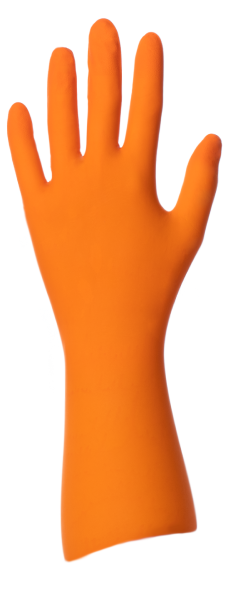WHICH PROTECTIVE GLOVES TO LIMIT ELECTROSTATIC DISCHARGE RISK?
Electrostatic discharge can cause irreversible damages to electronic devices, but it can also cause explosions within workspaces.Electrostatic discharge can cause irreversible damages to electronic devices, but it can also cause explosions within workspaces.
It is therefore essential to protect both workers and products from the serious or irreversible risks associated with static electricity by wearing gloves suitable for antistatic protection.
Wearing ESD protective gloves to counter the risks involved during production operations is a necessity in the industrial world and especially in the electronics, semiconductor, nanotechnology, or aerospace industries.
STATIC ELECTRICITY IN A FEW WORDS
ESD or electrostatic discharge is the release of an uncontrolled discharge of electricity between two objects that are not necessarily in direct contact.
First, the accumulation of static electricity must be avoided, especially included the static electricity caused by disposable gloves. It is also necessary to ensure that any static electricity generated is directed towards the ground.
Static electricity is either generated by the friction and then the quick separation of two materials or because of the difference in charge (positive or negative) between objects.
CONTROLLING ESD RISKS
It is therefore important both to always be grounded to earth and to choose materials that facilitate the flow of electric current to the ground, i.e., materials with dissipative properties.
Regarding the protection of workers and products, many protective devices exist such as wrist straps, shoes, clothing, and furniture with ESD performance etc.
Antistatic protective gloves are safety equipment recommended in most laboratories, cleanrooms, etc. They should be used in addition with other types of protection to minimize the risk of electrostatic discharge.
When it comes to choosing disposable antistatic gloves, there are a few essential principles to keep in mind:
- Use the right glove size to better fit your hand.
- Consider all the results of a glove tested in accordance with EN 1149-1:2006, EN 1149-2:1997 and
EN 1149-3:2004. - Prefer disposable nitrile gloves.
ESD NITRILE PROTECTIVE GLOVES
Materials have a critical impact on the generation of static electricity. It is therefore essential to choose the glove material according to its resistivity properties:
| MATERIAL | PROPERTIES | COMMENTS |
|---|---|---|
| Vinyl | Excellent due to high ionic residues on surface but these residues can contribute to contamination issues. | High concentration of plasticizers causing potential health issues. The best for ESD but the worst for barrier & cleanliness efficiency. |
| Nitrile | More or less dissipative according to the level of particles & ionic contamination on the surface (Unfortunately for cleanroom users, the dirtiest is better!). | Best compromise for ESD related applications in the Laboratory and Cleanroom. |
| Neoprene* | Close to insulative properties. | As many Neoprene gloves have an inner coating to facilitate donning, it is unlikely that they will have undergone rinsing in deionised water to enhance cleanliness. |
| Natural Rubber Latex | Insulative (very high Tribocharging characteristics). | Not suitable for static sensitive areas. |
*Several SHIELD Scientific gloves are manufactured with a blend of Nitrile/Neoprene. The percentage of Neoprene used in our gloves to improve comfort is small and does not have any impact on their ESD properties.
For more information about ESD and learn more about disposable gloves ESD issues, read our dedicated article.
ESD SHIELD Scientific GLOVES
All SHIELD Scientific gloves made of nitrile (acrylonitrile butadiene) are dissipative gloves, but their performance differs from one glove to another.
Contact your SHIELD Scientific sales representative who will guide you in selecting the most suitable glove for your manufacturing processes and provide you with the associated ESD certificate including all glove measurements (surface and vertical resistivity and attenuation time).






